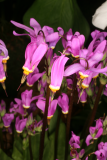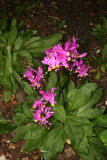Additional notes (click to expand)
Commemorative
It is named for Dr Richard Mead FRCP FRCPE FRS (1673–1754), physician to St Thomas’ Hospital and later to King George II. Mead came from Stepney, London, and, after initial schooling at home, studied at Utrecht (1688) and then Leiden (1692), from whence he qualifi ed in physic in 1695. In the same year, he gained a medical degree at Padua. He practised medicine in Stepney until 1702, when he published A mechanical account of poisons. He was elected FRS and became physician to St Thomas’ Hospital in 1703, and the reader in anatomy to the barber surgeons. In 1707 he was elected vice-president of the Royal Society, and Oxford University awarded him the degree of doctor of medicine. Following this he took and passed the (Royal) College of Physicians exam, becoming a fellow in 1716. He held numerous posts, but declined the offi ce of president in 1744. In 1745, he was elected an honorary fellow of the Royal College of Physicians of Edinburgh. He took over the private practice of Dr Radcliffe and resigned from St Thomas’ in 1714. Mead became
immensely rich, with a practice income of over £6,000 a year, acquired a huge library and art collection, was a generous host and lived a lavish life style which probably bankrupted him in the end (Munk, 1878).
Oakeley, Dr. Henry. (2012). Doctors in the Medicinal Garden. Plants named after physicians. Royal College of Physicians.
link
Nomenclature
Dodecatheon meadia is a synonym
http://www.plantsoftheworldonline.org/
Geographical distribution
- Northern America, Northeastern U.S.A.
- Northern America, Southeastern U.S.A.
Primula meadia (L.) A.R.Mast & Reveal
Family: PRIMULACEAEGenus: Primula
Species: meadia (L.) A.R.Mast & Reveal
Common names: American Cowslip, Shooting-star
Distribution summary: East U.S.A.
Habit: Perennial
Hardiness: H5 - Hardy; cold winter
Habitat: Prairies, wooded slopes on neutral to calcareous soils
Garden status: Currently grown
Garden location: North America (A), North America (A)
Flowering months: April, May
Reason for growing: Commemorative

.jpg)
.jpg)

